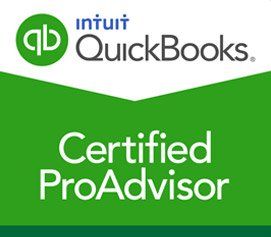Business Owners Have Until 2024 to Claim the Employee Retention Tax Credit Retroactively
The Employee Retention Tax Credit program has come and gone almost too soon, but that doesn’t mean your business can’t still benefit from it. In fact, it’s possible for business owners to retroactively claim the ERTC up to three years from the end of the program. For most businesses, that date was September 30, 2021, but a few businesses had an extension to December 31, 2021.
To add to the confusion, several laws have been passed which impact how the ARTC can be claimed. For this reason, it is highly encouraged that you
speak with a YokeTax professional to make sure you stay on the right side of the law.

What is the Employee Retention Tax Credit?
The ERTC was implemented by the 2020 CARES Act as a response to the COVID-19 pandemic. It was created to incentivize employers of all sizes to keep people on the payroll during the economic hardship caused by the pandemic.
Put simply, it gave qualifying businesses a tax refund on certain wages paid to employees, such as health insurance costs.
How things have changed
Beginning with the 2020 CARES Act, the ERTC could be claimed against 50% of qualified wages paid between March 13 and December 31, 2020. The limit was $10,000 per employee, per year.
The 2021 Consolidated Appropriations Act allowed qualifying employers to claim a credit against 70% of qualified wages paid. The limit was adjusted to $10,000 per employee, per quarter.
Finally, the American Rescue Plan Act of 2021 kept the credit claim at 70% of qualified wages. However, it also changed the limit to $7,000 per employee, per quarter.
In case you’re wondering: Yes, PPP loan recipients can also claim the Employee Retention Tax Credit
A bit confusing where you stand? That’s why we encourage readers to walk through this with a tax professional. Set up a free one hour consultation today.
Qualified Employers Under the ERTC
Qualification for the Employee Retention Tax Credit rests on a variety of factors, but we’ll take some time to go over a few common ones.
Business Hours
The business had to partially reduce or fully suspend business hours due to a government order during the pandemic. The credit does not apply for the entire quarter, but rather just the portion in which the business was suspended.
Two ways some businesses may not qualify due to business hours:
- They were deemed “Essential Businesses.” Unless the business’s supply chain (critical materials and goods necessary to conduct business) was critically disrupted, these businesses should have been able to continue with relatively normal operations
- The businesses were largely able to continue operations through telework
Even if your business does not qualify under the business hour stipulation, it might still qualify under gross revenue.
Gross Revenue
If an employer experienced a significant decline in gross receipts, it must apply for a safe harbor as explained under IRS Revenue Procedure 2021-33. The employer may exclude the amount of forgiveness from its definition of gross receipts if it received any of the following:
- A PPP loan
- Shuttered Venue Operations Grant
- Restaurant Revitalization Fund Grant
PLEASE NOTE: These exclusions to gross receipt calculation apply only for application to the ERTC.
Alternative Qualification Stipulations
As mentioned earlier, there are many ways that a business can qualify for the ERTC. Something as simple as a disruption in the normal ways of doing business caused by the pandemic can allow your business to qualify. For example, if your business depended on being physically at a client’s location to operate but was stopped by pandemic rulings, your business qualifies for the Employee Retention Tax Credit.
You’ll notice that there are a lot of “ifs” in these conditions. The IRS is aware of the possibility of ERTC fraud, and so it is critical to carefully and thoroughly lay out the impacts the pandemic had on your business. It is highly recommended that you connect with a YokeTax professional for further insights.
Qualified Wages Under the ERTC
The American Rescue Plan Act specified that wages paid after June 30, 2021 can be claimed for an ERTC against Medicare taxes paid on an employee. ERTC claims for before that date are put against Social Security taxes as they were in the 2020 tax year.
Qualified wages do not include sick leave wages and family leave wages.
Tips are included as qualified wages for an employee (for the purpose of the ERTC) if they exceed $20 per calendar month.
To determine the total qualified wages which can be included under the ERTC, businesses must first determine the number of full-time employees. For the ERTC, a “full time employee” is one who, in any month of 2019, worked 30 hours or more per week.
How things have changed
2020: Under the CARES Act, employers with over 100 full-time employees who were not providing services due to suspension or decline of business qualified. Any wages paid for vacation, sick leave, or family under the employer’s policy don’t qualify.
Employers with less than 100 full-time employees can utilize all employee wages- those who worked and those who didn’t. The only exception is paid leave provided under the Families First Coronavirus Response Act (sick and family leave).
2021: The Consolidated Appropriations Act increased the employee limit to 500 for determining applicable wages for the Employee Retention Tax Credit.
2021: The American Rescue Plan Act allowed the most financially distressed employers to claim credit against ALL employees’ qualified wages. To qualify as a “financially distressed employer,” the business must have had gross receipts for a quarter at less than 10% of what they had been during a comparable quarter in 2019 or 2020, pre-pandemic.
If the credit given exceeds the employer’s total liability for Social Security or Medicare, then the excess is refunded to the employer. This money will be reconciled in the employer’s Form 941.
How Can a Business Retroactively Claim the Employee Retention Tax Credit?
The IRS has shared Notice 2021-20. While it shares information similar to what has been highlighted in this article, it also gives further insight on how to claim the credit for past quarters.
Form 941-X must be filed for applicable quarters in which qualified wages were paid. While this process is more straightforward to determine for businesses which didn’t take out PPP loans, businesses who did must deal with some further complications.
Pages 73-81 of the notice go into detail on the stipulations for PPP loan employers, but it’s far simpler to determine where you stand by having a
free one hour consultation with a YokeTax professional.



